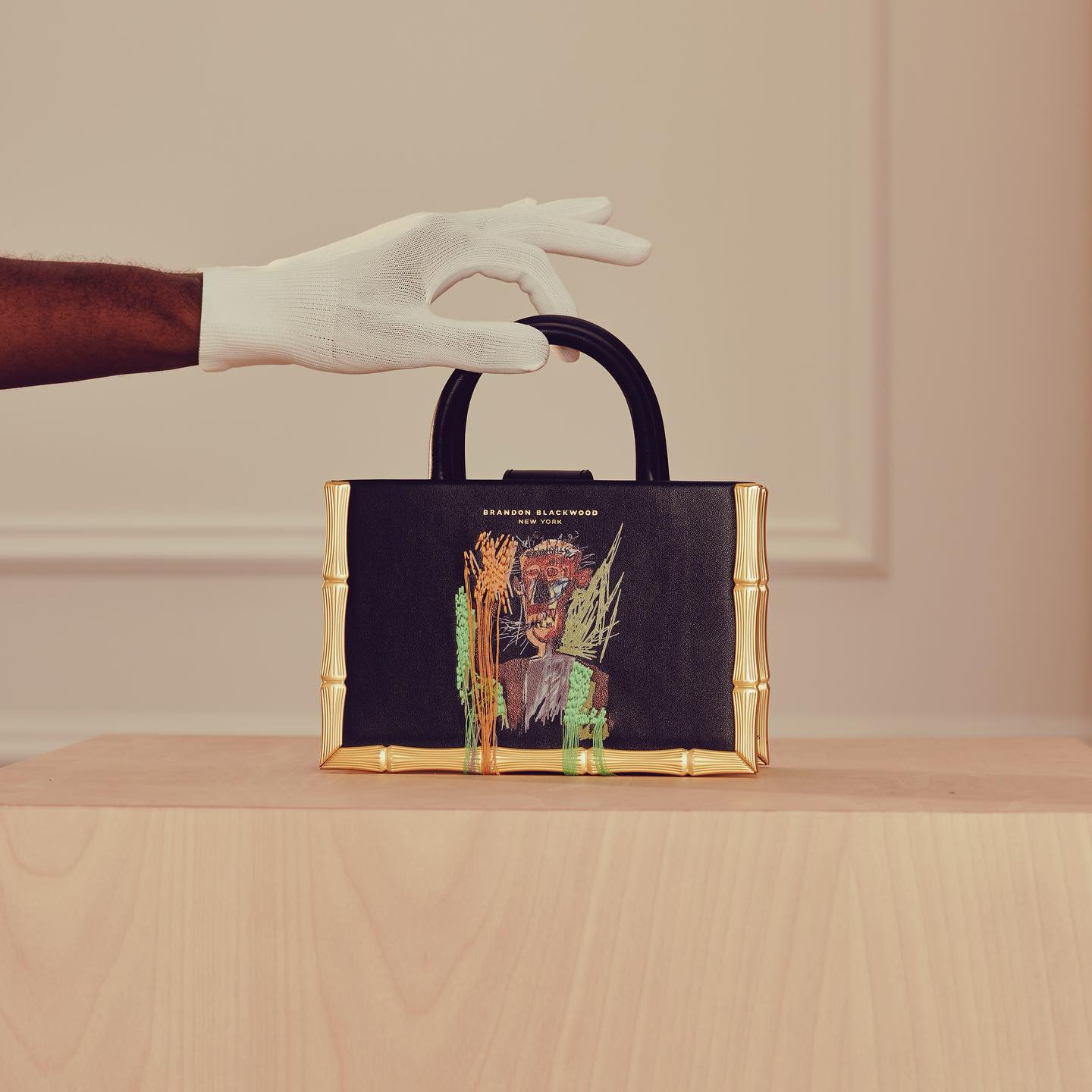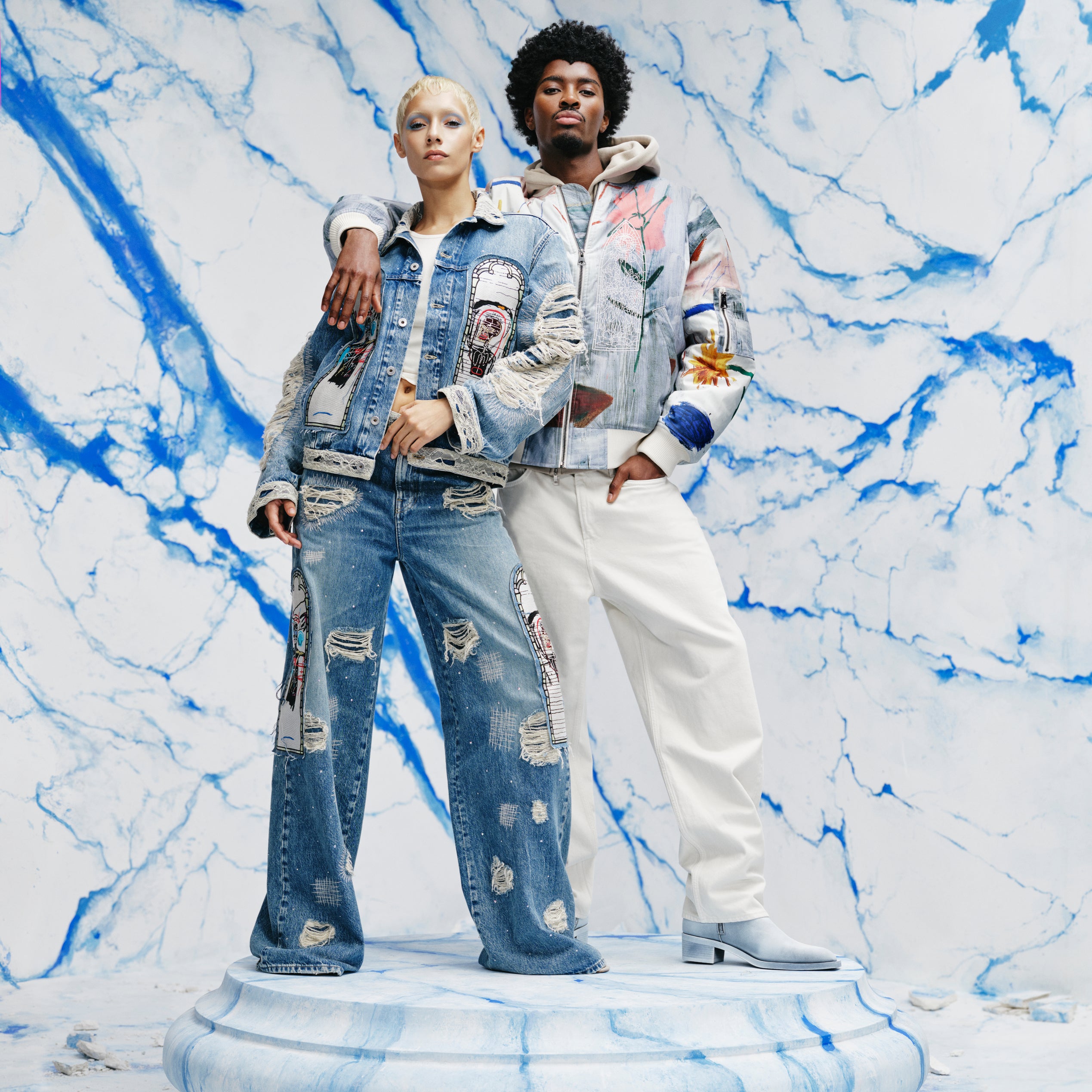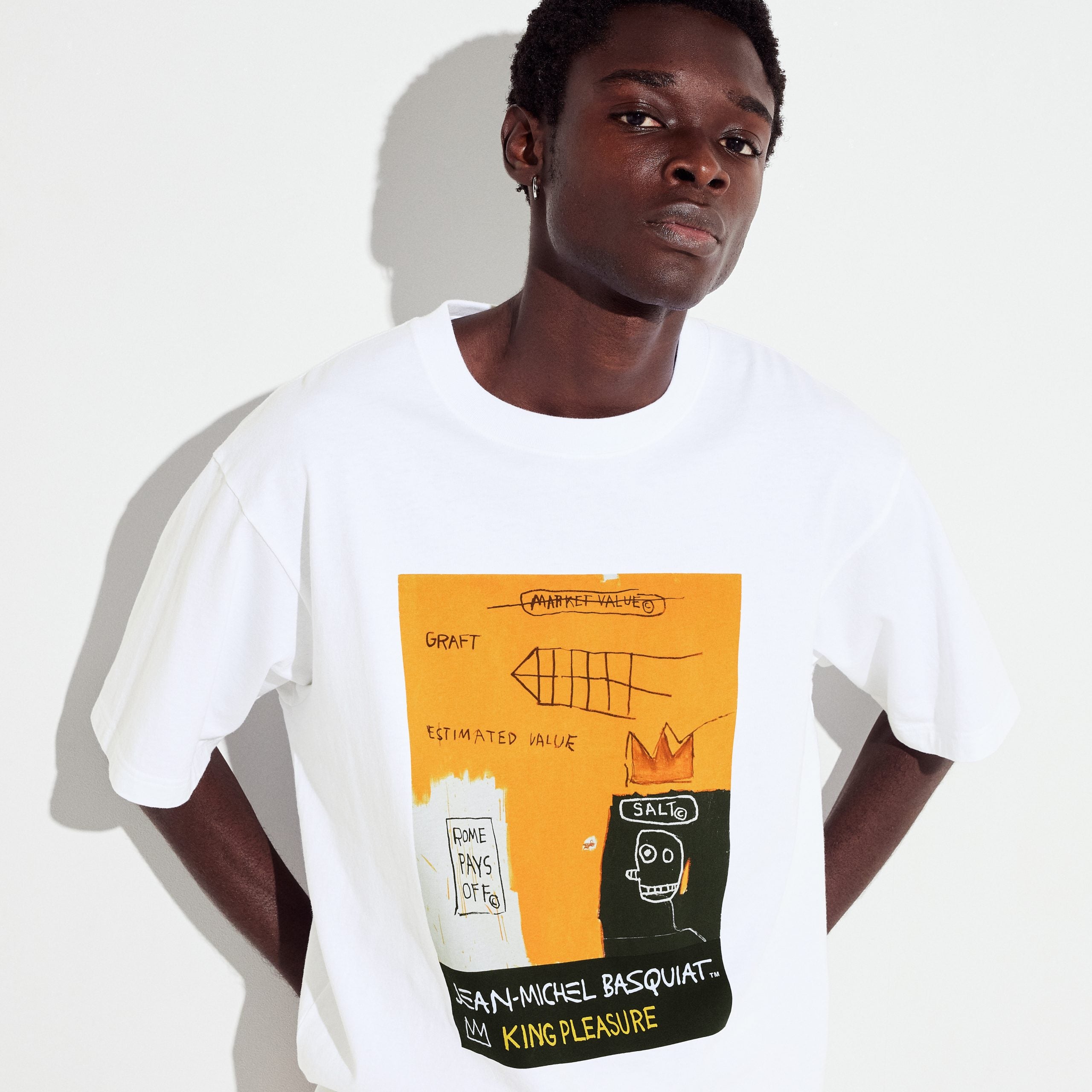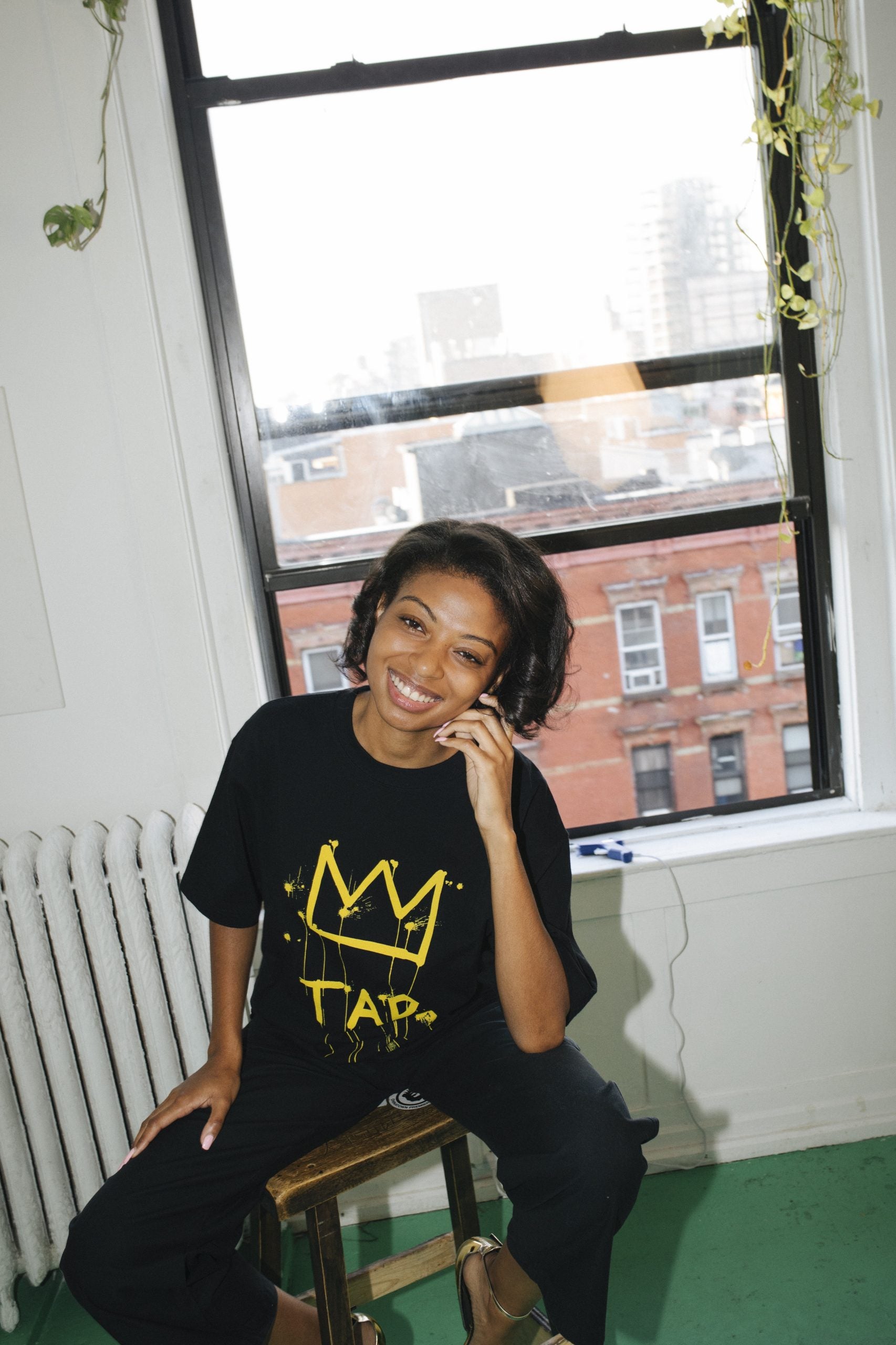Fashion
Unpacking The Fashion Industry And Its Relationship With Jean-Michel Basquiat | Essence

Fashion is having a love affair with Jean-Michel Basquiat. But it’s not like any other instance where the industry is posthumously appreciating an artist. Rather, it’s a story of intergenerational love and a blueprint for protecting your work as a Black artist.
Collaborations featuring the late artist’s work are abundant and increasing in number, from candles to footwear. This particularly came into the spotlight two years ago, when a one-of-a-kind exhibit landed in New York City. “King Pleasure,” named after one of Jean-Michel’s paintings, offered a never-before-seen look into his life and legacy through an assembly of his earliest doodles, the art he became known for, and recreations of his Brooklyn home and his Lower East Side Manhattan studio.
In the last month of the exhibition–which was organized by the estate his younger sisters now lead Black Fashion Fair debuted a collaborative collection alongside the artist’s pieces. Visitors could walk in and witness the power of one of Jean-Michel’s large-scale canvases or a painted-over refrigerator door before also seeing a designer’s sartorial translation of his work. Hanifa, Theophilio, and Who Decides War were just a few of the Black-owned labels featured.

“I don’t want to sound crazy, but I wanted the items to feel like a piece of his work. Like you were holding it,” Brandon Blackwood, a designer whose eponymous line was featured in the exhibition tells ESSENCE. The end result? He released a cardholder and handbag featuring embroidered painting motifs that quickly sold out, in addition to some artful, not-for-purchase boots.
That 2022 debut only marked the latest collaboration between fashion and Jean-Michel, as it came after the likes of Coach, Off-White, Dr. Martens, Tiffany & Co., and Reebok, to name a few. There have been a handful since, including one of this summer’s buzziest sartorial releases, a three-way between Who Decides War, H&M, and the late artist’s estate.

Collaborating with fashion brands makes sense. Jean-Michel appeared to appreciate fashion himself and was known to wear Comme des Garçons. He even walked the Japanese label’s Fall/Winter 1987 runway in Paris. There’s also an incredible aesthetic appeal and spiritual seduction in his work between the crown that reminds viewers of their rich heritage; the words, timeless in their commentary and echoing true across temporal realities; and the chromatically rich clusters of paints, oil sticks, and collaged-on items. Printing his artworks on wearable items–spanning affordable brands like Uniqlo to luxury design houses like Yves Saint Laurent and Japanese streetwear label Wacko Maria. Each of these collaborations allows a wider range of fans to own a piece of his work. After all, few of his works are for sale, and few can afford them anyway. For instance, when “Untitled” sold in May 2017 for $110.5 million, it was the highest price paid at auction for an American artist’s work.
What’s particularly interesting, though, is that these collaborations have accelerated over the past decade. What else could explain Jean-Michel’s posthumous expansion into fashion? People love and shop the collaborations, and this has made them an essential part of his estate’s strategy under the guidance of his sisters.
“When my brother passed away, my dad was working in corporate himself. He stepped in [and] took the knowledge he had as an accountant to manage the estate. From there, it’s about pulling in all of the licensing, all of the copyrights, the trademarks, and all of those things that are associated with an artist,” in addition to collecting and cataloging all the works Jean-Michel left behind, Jeanine Heriveaux revealed on an episode of Talk Art podcast in 2023. Gerard Basquiat, their father also collected and kept many works, “not wanting to flood the market,” which helped increase the paintings’ value.

“For him, [that] was his way of claiming his son is really what it was… his way of showing the way that he loved his son, protecting his son, and doing that for the remainder of his life,” Lisane Basquiat said on the aforementioned podcast episode. Gerard Basquiat, ran the estate for 25 years until he passed away in 2013, and sisters Heriveaux and Jeanine Basquiat took the reins soon after and have since brought the estate into a new era.
“King Pleasure” became a recent landmark in Jean-Michel’s legacy as it signaled a new chapter for the estate. It was a move to “reset the narrative” and “add a layer to what’s out there right now, the layer which is him as a brother, as a son, him having a family, what made Jean-Michel become the person that he was,” Heriveaux explained on the Talk Art podcast.
A focus on fashion collaborations has undoubtedly been part of the sisters’ strategy, too, as they’ve ensured appreciation is part of amplification. Heriveux has publicly shared that it takes money to run the estate. “It takes money to protect his interests. Licensing is a way of being able to do that while also protecting the actual artwork and not having to sell it,” she explained in the previously mentioned podcast episode. Still, they’re not wanton about who becomes a collaborator.
According to Brandon Blackwood, the estate has been choosing the larger cultural moments and collaborations by ensuring each endeavor is fitting. He adds that they were very involved in his key moment with the brand. “We didn’t just make something and then bam. There were approvals, they had questions, and they wanted to know why this thing existed. That was beautiful,” Blackwood shared.
What’s important to remember is that there’s a critical tension between the mainstream reverence of Jean-Michel compared to how he was treated when alive. Despite how celebrated he is now, the artist himself faced a completely different and more racist reality in the late ‘70s and ‘80s when he was fighting for his place in the art world, in New York City and on a global scale.

In the Talk Art podcast, Heriveaux expressed that even though Jean-Michel was getting exhibitions he was still not treated “the best.” She goes on to detail that he still had to face art critics who were critical of him. “It was almost as if they didn’t believe they had the talent that he did. They questioned his methods of approaching the work, the source materials that he used. They accused him of copying from books as opposed to absorbing and putting it on canvas.” Despite these challenges, she says that he did have a lot of advocates in his corner.
There will, almost undoubtedly, be more collaborations ahead, and the late artist’s posthumous impact on fashion deserves to be studied or at least captured for future generations to become privy to his longstanding, legacy-building works. These methods would lionize how his messages translate, or fail to–how his legacy is amplified or can be lost, depending on the brand–and how his visual language is influencing what we now find aesthetically appealing.
“Keeping the integrity of all the actual art is difficult. You’re still commercializing, you’re putting a product out there that carries the art. I think it’s so important to be able to tell the story and the background, which I think that Ev and Tela did so well,” H&M Menswear Designer Ana Hernández says when speaking on the duo Ev Bravado and Téla D’Amore and their recently released collaboration. Intentional collections like the Swedish brand’s with Who Decides War may be a way for larger brands to maintain an authentic portrait of Jean-Michel and what he stood for.
Fashion-art collaborations aren’t anything new. It’s incredibly easy to find artists like Haring, Koons, and Monet as references in the industry. But, Jean-Michel’s work is viewed with a different lens especially contextually. He’s one of the few Black artists to reach this level of recognition–but this notoriety also comes posthumously, as the art world was biased against him when he was alive. What’s helped make it possible is how each generation of his family protected him, from his father, holding onto his works to avoid inflating the market. To his sisters who’ve created new ways to see and celebrate his life. This isn’t just another art-meets-fashion narrative, it’s an intergenerational tale of Black love, too.
Despite an art world that often racialized and rejected him during his lifetime, the tides have changed. Multiple industries not only uplift his work, but many of these partnerships generate income for his family-run estate that has doggedly protected his story, first done by his father and then sisters. Some collaborations may feel random, but they have ultimately made Jean-Michel’s paintings and commentary more accessible beyond the high art’s ivory towers, making his impact on culture even more everlasting.




.jpg)




